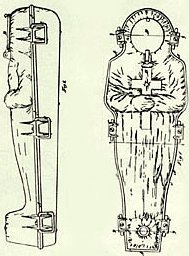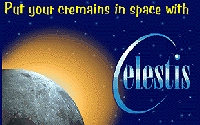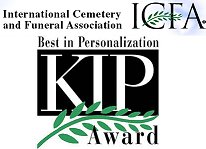FUNERARY RITUAL
& THE FUNERAL INDUSTRY
 Funerals are the greatest source of social change
Funerals are the greatest source of social change
--Kenneth Boulding
Lest we forget, funerals really are the social event.
Consider the February 1990 funeral of publisher Malcolm Forbes. The mourners
included ex-President Richard Nixon, actress Elizabeth Taylor (who sat
in front pew with the ex-President), Chrysler Chairman Lee Iacocca, Hell's
Angels cyclists, Barbara Walters, Joan Rivers, David Rockefeller, Ann Landers,
Mrs. Douglas MacArthur, former New York City mayor Edward Koch, and 1,700
others. What other social occasion can bring together such a collection
of individuals?
HOW, SOCIOLOGICALLY, WOULD YOU EXPLAIN THIS CUSTOM?
Up until the early 18th century, both American Northerners and Southerners observed the English custom of
the deceased's family providing each of their funeral guests with a black scarf, a mourning ring, and a pair of black
gloves--or at least as many of these that they could afford. In 1721, laws
were passed limiting such gifting to the six pallbearers and the officiating
minister.
(Mary Cable. 1969. American Manners
& Morals: A Picture History of How We Behaved and Misbehaved. NY:
American Heritage Pub. Co.)
|
 Rituals are condensed forms of experiences, tips of icebergs of meanings and social mechanisms for transformations.
These enactments of cultural belief systems go beyond mere ceremony, as Victor Turner noted when defining
ritual as "prescribed formal
behavior for occasions not given over to technological routine, having
reference to beliefs in invisible beings or powers" (From Ritual to
Theatre: The Human Seriousness of Play, p. 29) that preserve the structures
of both self and society. In rite-of-passage rituals, of which funerals are a type, old
used-up selves are shed so new ones can be instilled. With
increasing individualism and profoundly different times, traditional rituals may
no longer "work" and thus we see the rise of do-it-yourself
funerals.
Rituals are condensed forms of experiences, tips of icebergs of meanings and social mechanisms for transformations.
These enactments of cultural belief systems go beyond mere ceremony, as Victor Turner noted when defining
ritual as "prescribed formal
behavior for occasions not given over to technological routine, having
reference to beliefs in invisible beings or powers" (From Ritual to
Theatre: The Human Seriousness of Play, p. 29) that preserve the structures
of both self and society. In rite-of-passage rituals, of which funerals are a type, old
used-up selves are shed so new ones can be instilled. With
increasing individualism and profoundly different times, traditional rituals may
no longer "work" and thus we see the rise of do-it-yourself
funerals.
 Resources on funerals & their social functions
Resources on funerals & their social functions
- Betram S. Puckle's 1926
Funeral Customs: Their Origin and Development
- Museum of Funeral Customs, from the Illinois Funeral Directors Association
- Dan Meinwald's
funeral page, historical overview of the ritual
- Funeral Customs, from the
New River Group's historical resources site
- Stephen Buckley's "In Africa, Funerals Use Rituals of Joy to
Ease Sorrow," Washington Post
THE FUNERAL INDUSTRY
As previously developed, death in developed societies has become hidden
from everyday life. In the United States and other developed countries,
death and the dying process are largely institutionalized, and bereaved
families pay strangers to transport, sanitize, reconstruct, clothe and
dispose of their dead members. These are employees of the estimated $15 billion a
year (as of 2001), increasingly
consolidating American death care industry. The major players (in
order): Service
Corporation International, Alderwood
Groups, Stewart Enterprises,
StoneMor, and Carriage
Services.

As of 2000, there are more funeral homes (23,000, serving the 2.32 million deaths each year) than nursing homes
(17,000, serving 1.6 million residents) in the
United States. That means that each of these
curiously-labeled "homes" attends to roughly the same number of
"cases": 94 residents on average per nursing home and 101 post-nursing
home residents per funeral home. Funeral industry stocks have consistently
produced some of the highest returns of any industry over the past few decades.
Concurrently , this
industry has received considerable
criticism, most notably in Jessica
Mitford's 1963 classic, The American Way of Death . (See
also U.S. News & World Report's March 23, 1998 cover story "The Deathcare Business: The Goliaths of the funeral
industry are making lots of money off your grief",
Suzi Parker's January 12, 2001 Salon article "Get
Your Laws Off My Coffin!", and perhaps listen to NPR's
"The Funeral Industry" with Karen Leonard, Mitford's research
assistant.) Allegations that
its practitioners have taken unwarranted advantage of those in the throes
of grief have led to Congressional hearings, new trade practices rules
from the Federal Trade Commission, and undercover sting operations staged
by various consumer groups. Industry regulation varies considerably, as
noted in the GAO's August 2003 report, "Death
Care Industry: Regulation Varies across States and by Industry Segment."
Cemeteries have entered into the funeral service
competition and, unlike funeral homes, are not covered by the 1984 Federal
Trade Commission Rules
requiring itemized price lists.
However, there is evidence that new understandings
are emerging between the industry and a more informed public. For instance,
check out the Funeral
Ethics Association, whose purpose, according to its Constitution, is
"to provide the public and the profession with a balanced forum for
resolving misunderstandings and to elevate the importance of ethical practices
in all matters related to funeral service."
Class dynamics produce an interesting twist in our
tale of cultural death-denials. Funeral directing is of few state-recognized
professions that provides upward mobility for those who, by chance of birth,
are often thwarted in their attempts to achieve professional respect. This
status has been hard won, deriving from over a century of attempts in the
United States to expand and to legitimate its occupational purview, to
establish its craft as a "science".
Cross-culturally, it is often the lower classes that were typically assigned
to handling the dead, such as the Eta of Japan or the Untouchable in India.
But the so-called "Dismal Trade" of eighteenth century England
was to evolve into a host of thanatological specialists seeking social
recognition and status: embalmers, restorers, morticians, and some even
calling themselves "grief experts".
 To give the industry and its product historical
legitimation,
the National Funeral Directors Association
commissioned Robert Habenstein and William Lamers (1955). Their book, The History
of American Funeral Directing, reviews the history of funeral practice in Western
civilization from ancient Egypt on, and was required reading for years in mortuary colleges.
(Tour the National Museum of Funeral History
in Houston.) The Web of
Time has two articles on the industry's history and its products: Julian W. S. Litten's
"Going in
Style-The Coffin: Its Place in Social History," and Richard Akerman's
"Picture Perfect: A
Cast-Iron Case." See also John L. Konefes and Michael K. McGee's "Old
Cemeteries, Arsenic, and Health Safety."
To give the industry and its product historical
legitimation,
the National Funeral Directors Association
commissioned Robert Habenstein and William Lamers (1955). Their book, The History
of American Funeral Directing, reviews the history of funeral practice in Western
civilization from ancient Egypt on, and was required reading for years in mortuary colleges.
(Tour the National Museum of Funeral History
in Houston.) The Web of
Time has two articles on the industry's history and its products: Julian W. S. Litten's
"Going in
Style-The Coffin: Its Place in Social History," and Richard Akerman's
"Picture Perfect: A
Cast-Iron Case." See also John L. Konefes and Michael K. McGee's "Old
Cemeteries, Arsenic, and Health Safety."
There can be little question that the embalmed
body is the cornerstone of this industry.
Without it there would be no need for all of the accoutrements for "viewings":
slumber rooms, elaborate coffins, or funerary apparels. Thus it is in the interest of
th e
industry for Americans to believe that a funeral without a body is like a marriage
ceremony without the bride or like a baptism without an infant. Cremations often mean
no open casket ceremonies. In our own class surveys,
students preferring burial were well over twice as likely to approve of "lying in state" than
those preferring to be cremated. Now, with more than one out of five deceased
Americans now being cremated (with rates being projected to increase to nearly one-third
by 2010--click here to see state rates) is it not
interesting to see casket companies writing
about cremation? (It should come as no surprise that such serious matters
invite humor and parody, such as funeralguy.com
with "a lighter look of the world of funerals, cemeteries, death and
the death care industries...") For a history of this means of body
disposal in America see Laura
Miller's review of Stephen Prothero's Purified by Fire in Salon.com.
The Internet Cremation Society bills
itself as "the number one visited cremation site in the world."
e
industry for Americans to believe that a funeral without a body is like a marriage
ceremony without the bride or like a baptism without an infant. Cremations often mean
no open casket ceremonies. In our own class surveys,
students preferring burial were well over twice as likely to approve of "lying in state" than
those preferring to be cremated. Now, with more than one out of five deceased
Americans now being cremated (with rates being projected to increase to nearly one-third
by 2010--click here to see state rates) is it not
interesting to see casket companies writing
about cremation? (It should come as no surprise that such serious matters
invite humor and parody, such as funeralguy.com
with "a lighter look of the world of funerals, cemeteries, death and
the death care industries...") For a history of this means of body
disposal in America see Laura
Miller's review of Stephen Prothero's Purified by Fire in Salon.com.
The Internet Cremation Society bills
itself as "the number one visited cremation site in the world."

The cremation industry is, not surprisingly, becoming increasingly
differentiated. There are companies, for instance, that will
turn cremains into jewelry. Eternal
Reefs will "Turn your Loved One's Ashes into a Living Coral Reef."
Space Services Inc.,
formerly Celestis, will launch one's remains
into space!
Other "insider" resources from the industry:
- Links galore from FUNERAL.COM
- Final Embrace--"Funeral home management and marketing advice from veterans of funeral service"
- Selected Independent Funeral Homes

- Links galore from Cremation Association of North America -- loaded with
information about state rates, historical trends, disposition, etc.
- International Cemetery and Funeral Association--
"Guardians of a Nation's Heritage"
- Everlife Memorials--memorials and
memorial products for people and pets alike (see also its
articles and
consumer guides)
-
HeavenlyDoor.com--a pre-need and funerary product locator site
(site disappeared by Dec. 2007)
- Arrangements.com--working in cooperation
with participating funeral homes with info on bereavement air fares, estate attorneys, florists,
appraisers, etc.

- National
Academy of Mortuary Sciences
-
Mortuary Schools in the U.S.
- HeavenlyDoor.com complete with funeral home and cemetery search engine
- San
Francisco College of Mortuary Science
- Funeral Service Education from
St. Louis Community College
- Abbott
and Hast Publishers, who bring you "Mortuary Management" magazine
and the "Funeral Monitor" newsletter
- National Casket Retailers Association
- W.R. Bennett Funeral Coaches--great images of vehicles for the final ride past and present
 I guess it was to be expected: one can now receive online
funeral service consulting and make wholesale casket purchases from Zwisler Brothers "Tomorrow's
Cradle", ClassicMemorials.com,
and Funeralitems.com
. Frugalfuneral.com out
of Portland, OR, claims to have the only listing of funeral prices on the
web. Another funeral planning service, one targeting web-savvy, professional
Boomer males, is Funerals to Die
For--"discover how much fun making your arrangements can
be." To secure tomorrow's funeral at today's prices on the web,
go to Cooperative
Funeral Service in Great Britain.
I guess it was to be expected: one can now receive online
funeral service consulting and make wholesale casket purchases from Zwisler Brothers "Tomorrow's
Cradle", ClassicMemorials.com,
and Funeralitems.com
. Frugalfuneral.com out
of Portland, OR, claims to have the only listing of funeral prices on the
web. Another funeral planning service, one targeting web-savvy, professional
Boomer males, is Funerals to Die
For--"discover how much fun making your arrangements can
be." To secure tomorrow's funeral at today's prices on the web,
go to Cooperative
Funeral Service in Great Britain.
With industrialization came mass production--and mass
consumption to move the glut of goods. With the service orientation of
postindustrialism has come the customization of goods and services. Enter
Perpetua, Inc., one of whose funeral homes fashions various
realistic settings for the final farewell, including "Mama's Kitchen."
Another predictable phenomenon that has come to be is the electronic funeral. Claiming up to
be the first funeral home to broadcast a live funeral is Fergerson Funeral
Home. Funeral-Cast also
presents online services and has a directory of recent services for replay.
A new dimension of electronic memorials comes from Forever
Network, where the Hollywood elite, such as Rudolph
Valentino, and common folk are immortalized in text, photographs, and
movies.
ADDENDUMS
- Every worry about being buried alive? For a history of the fear see Salon.com's
Gary Kamiya's review
of Jan Bondeson's
Buried Alive: The Terrifying History of Our
Most Primal Fear
WARNINGS AND
GUIDES FOR THE CONSUMER
-
City of the Silent's A Consumer's Guide to Cemeteries and Funerals--answers
to all sorts of questions involving the industry, such as "Does the law
say that I must be embalmed?" and "Do I have to employ a funeral
director?"
-
FAMSA-Funeral Consumers Alliance (a federation of nonprofit consumer information societies)
- Funerals:
A Consumer Guide -- September 1991
- AARP's Funeral and Burial Planners Survey 1999
-
Dovetail-Resources for Funeral
Planning
-
DragoNet's Funeral Help Page--"funeral costs
are obscene!", with a "Funeral SCAM of the Month" section
-
The Internet Cremation Society
-
The Cremation
Consultant
-
Sympathy
and Funeral Arrangements
MEMORIAL
SOCIETIES
In 1992, the National Funeral Directors Association
held its 111th meeting here in San Antonio. A straw vote was taken of its
members' preferences for U.S. President that year. Bush was favored by
nearly two-thirds. One mortician said the votes were swayed by funeral
directors' concerns about Clinton's plans to more heavily tax Americans
making over $200,000 annually more. "Who in the hell doesn't make
$200,000 anymore?" he said.
There are a number of reasons why funeral homes have
one of the lowest failure rates of any business and why the funeral industry
produces one of the highest stock returns of any American industry. (And,
to boot, funeral homes are not required by federal law to file their financial
statements with the SEC.) Certainly one reason for the industry's success
involves Americans' death denials, often preventing any decision-making
until death occurs. Further, there is a profound ignorance about funerary
services and products, which include such costs as embalming (which, contrary
to popular opinion, is not normally required by law), funerary apparel,
usage fees for "slumber room" and chapel, a burial plot, the
grave liner, marker, newspaper obituaries, and the opening and closing
of the grave. As I wrote in Endings: A Sociology of Death and Dying:
When one enters a funeral home one enters ill prepared,
for this is not a K-Mart or dentist office, places for which one has prior
experience and knows "the game." One does not take a number nor
pushes a cart down aisles. Nor does one see samples of the quality of work
done. Instead, one enters at the mercy of a receptionist, who announces
to the staff that another performance is to begin and to "get into
role." The prospective customer, unfortunately, knows neither the
cues nor the script. She is then introduced to her funeral director. As
Turner and Edgley (1975:384) note, "the change of titles from `undertaker'
to `funeral director' has been perhaps the largest single clue to the dramaturgical
functions the industry now sees itself as performing. He is indeed a `director,'
controlling a dramatic production."
To make the drama more interesting, recall that this new
player is not oneself. Often a significant other's death has just occurred
and one has begun feeling the most awesome of emotions: grief. Experiencing
feelings that perhaps have never before been felt before and entering the
bereavement role, for which one may have no performance expectations, one
meets the man who "knows" about such things, the funeral director.
Our new widow is then led to a private "counseling" room, a diploma-filled
office looking much like that of any health care professional.
To counter the high cost of dying (average funeral
costs now exceed $5000), several funerary reform movements have arisen.
Among the most successful are the memorial societies that have sprung up
around the country. These groups promote simple services and basic products,
such as cremation, no embalming or viewing, and inexpensive wood caskets.
They negotiate with area funeral homes to provide their members economical
memorial services.
Check you local phone book to find the memorial society
in your area (don't expect to find it listed under "Funeral"
in your Yellow Pages). Even if one does not exist locally, one can still
receive the benefits of one by joining the Funeral
and Memorial Societies of America, Inc.. 6900 Lost Lake Road Egg Harbor,
WI 54209-9231 (414) 868-3136
For those in the San Antonio area, contact The San Antonio
Memorial Society at (210) 341-2213. In Houston, upon recommendations of the national society and to
make it easier to look up in the Yellow Pages, the name is now Funeral Consumers Alliance of Houston.
THE ALTERNATIVE-DEATH MOVEMENT
 Reacting against the funeral industry's control over mortuary ritual, some individuals
seek to return control to families. Included in their agenda are home funerals
(including home preparation of the deceased, which is legal in all states but
New York, Louisiana, Indiana and Nebraska) and green burials. See Nancy
Rommelman's "Crying
and Digging: Reclaiming the Realities and Rituals of Death" (Los
Angeles Times, Feb. 6, 2005).
Reacting against the funeral industry's control over mortuary ritual, some individuals
seek to return control to families. Included in their agenda are home funerals
(including home preparation of the deceased, which is legal in all states but
New York, Louisiana, Indiana and Nebraska) and green burials. See Nancy
Rommelman's "Crying
and Digging: Reclaiming the Realities and Rituals of Death" (Los
Angeles Times, Feb. 6, 2005).
-
Final Passages--"dedicated to a compassionate and dignified alternative
to current funeral practices"
- PBS's
"A Family Undertaking"
-
Thresholds Home and Family-Directed Funerals

 Return to Kearl's Death Index
Return to Kearl's Death Index
 Rituals are condensed forms of experiences, tips of icebergs of meanings and social mechanisms for transformations.
These enactments of cultural belief systems go beyond mere ceremony, as Victor Turner noted when defining
ritual as "prescribed formal
behavior for occasions not given over to technological routine, having
reference to beliefs in invisible beings or powers" (From Ritual to
Theatre: The Human Seriousness of Play, p. 29) that preserve the structures
of both self and society. In rite-of-passage rituals, of which funerals are a type, old
used-up selves are shed so new ones can be instilled. With
increasing individualism and profoundly different times, traditional rituals may
no longer "work" and thus we see the rise of do-it-yourself
funerals.
Rituals are condensed forms of experiences, tips of icebergs of meanings and social mechanisms for transformations.
These enactments of cultural belief systems go beyond mere ceremony, as Victor Turner noted when defining
ritual as "prescribed formal
behavior for occasions not given over to technological routine, having
reference to beliefs in invisible beings or powers" (From Ritual to
Theatre: The Human Seriousness of Play, p. 29) that preserve the structures
of both self and society. In rite-of-passage rituals, of which funerals are a type, old
used-up selves are shed so new ones can be instilled. With
increasing individualism and profoundly different times, traditional rituals may
no longer "work" and thus we see the rise of do-it-yourself
funerals.









